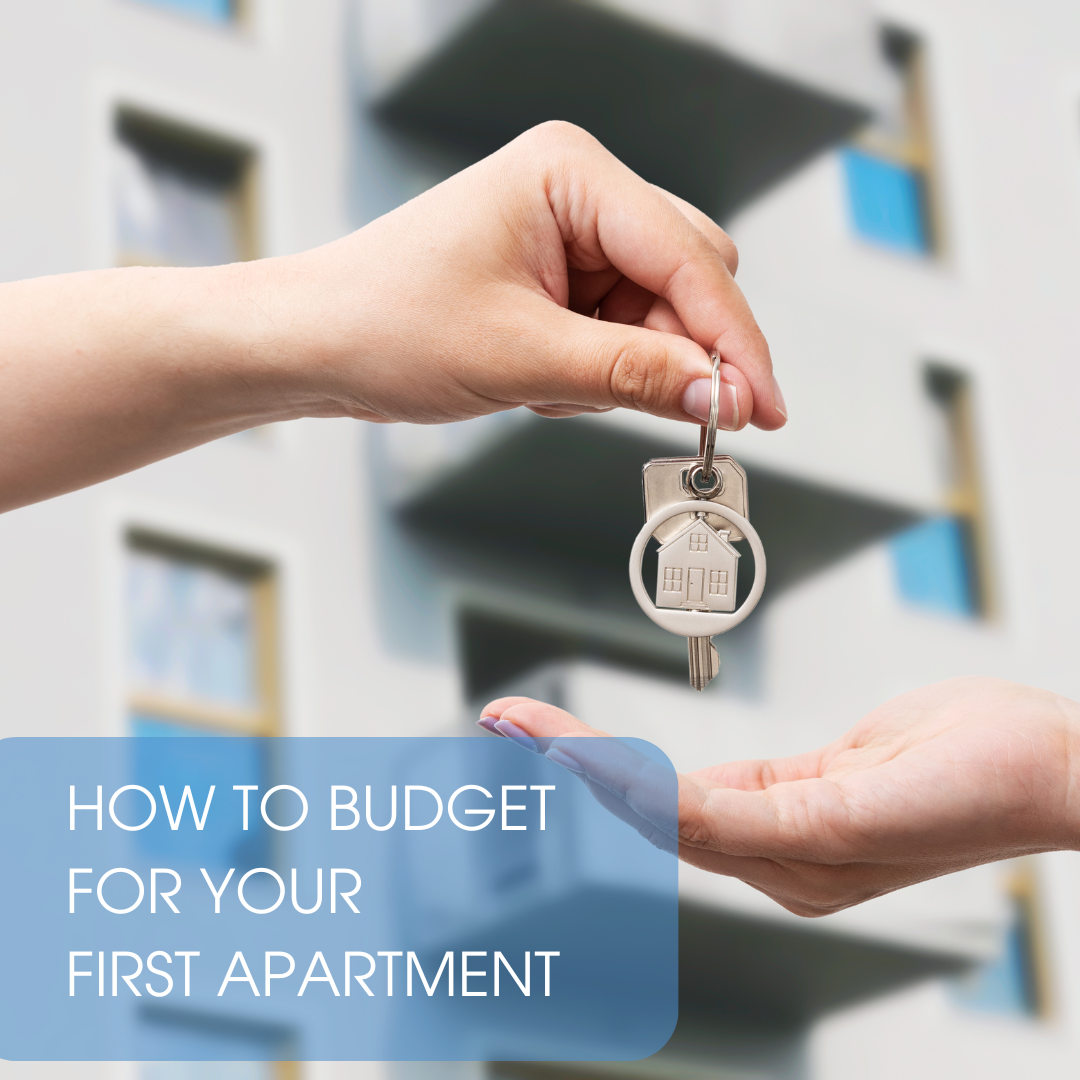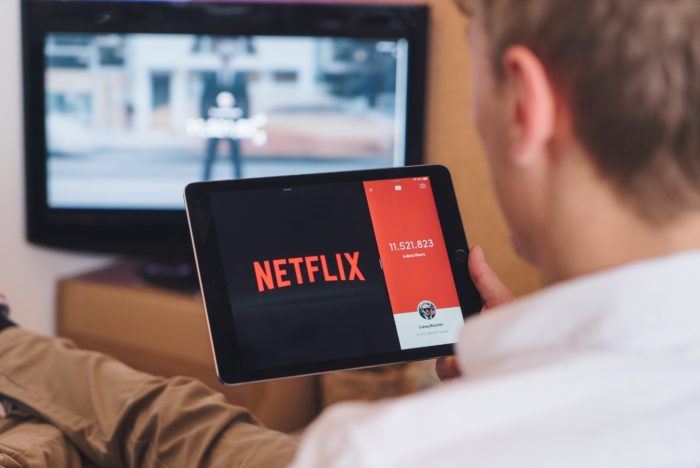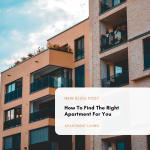
How To Budget For Your First Apartment
April 28, 2021 3:25 pm Leave your thoughtsGetting ready to move out can be stressful, and there can be many expenses, especially if it’s your first apartment. It’s essential to stay organized and create a plan even before moving. There can be unexpected costs with apartments or various move-in extras that you need to be aware of. Moving to your first apartment is exciting! Don’t let stress get in the way. Getting prepared beforehand will allow you to move forward with confidence!
There are a few strategies that you can use to budget for your first apartment. Following this budget process will help you make sure that you are in a situation that works for you. Don’t get into an apartment only to realize that it is completely outside of your budget. With these tips, you will be able to prepare with the right mindset and find the place that works for you.
1 – Calculate Your Rent Budget
The first thing you need to decide is how much you can pay for rent. There are various methods to calculate just how much you will be able to spend on rent. These calculations will involve reviewing your income and other expenses. You can use a rent calculator to determine the exact amount. Historically, rent prices have increased by approximately 3% to 5% each year in the United States, so make sure you keep that in mind for your long-term budget planning.
This is the first step anyone should take before even looking at apartments. It allows you to go into moving with a clear head of exactly how much you can spend each month. Without doing this, you run the risk of falling in love with a place that doesn’t fit your budget.
Take the time before looking at apartments to understand how much you can spend on rent each month.

2 – Allocate Your Budget
Balancing your budget between rent and living expenses is like walking a tightrope. You want to spend enough on a place to call home without shortchanging your daily needs. Rent should only take a slice, not half your income. Experts recommend spending about 30% of your monthly income on rent. This way, you have the rest for groceries, utilities, and savings.
After setting aside 30% for rent, divide the rest between necessities and nice-to-haves. Must-haves include food, utilities, and transportation. Nice-to-haves might be your Netflix subscription or weekend outings. You might find ways to tweak the nice-to-haves, like swapping dining out for cooking with friends. This approach helps you maintain a comfortable lifestyle without tipping the scales too heavily on either side.
3 – Save For A Security Deposit
A cost that can take a lot of people by surprise when moving is often the security deposit. This may be because security deposits vary depending on the property and the landlord. On average, security deposits are equal to one month’s rent, but this can vary significantly based on location and rental policies. Some properties consistently follow a system of making the security deposit the same price as the rent, but that’s not always the case. Finding out the usual cost beforehand will allow you to save and be prepared for the expenses.
When you have the amount saved early, you won’t have to worry as much during the move-in process. It will also prevent it from being a heavy burden. Having the security deposit ready allows you to focus on other factors. Saving for your security deposit is one of the best ways to budget for your first apartment!
And don’t forget about your credit score! Sometimes security deposits (and even rent prices) vary based on your credit, so make sure you learn the credit score you need for an apartment. A credit score of 620 or higher is often preferred by landlords, potentially lowering security deposit requirements.
4 – Budget for Initial Setup Costs
When planning your move, it’s easy to focus on rent and forget about the unexpected upfront costs. But a solid apartment budget covers more than just rent and the security deposit. Your new home will likely have upfront costs like setting up utilities such as electricity, water, and internet, which may include installation fees or deposits. Also, parking, renters’ insurance, and your first big grocery trip are costs that add up quickly but are essential for turning an empty apartment into a cozy, functional space.
To handle these costs, creating a detailed budget ahead of time is key. Start by listing all the expected expenses you’ll face before unpacking. Along with utilities, remember to budget for one-time purchases, especially if you’re moving into an unfurnished place. Common essentials include furniture, kitchenware, and bedding. To ease the financial impact, set aside a savings fund several months before moving. For example, if you expect $1,000 in setup costs, saving an extra $100 a month can help you reach that goal without straining your budget.
Pro tip: Many utility companies share their fees upfront, so you can request estimates and avoid surprises. Similarly, some apartment complexes bundle parking fees or offer move-in discounts if you lease during a promotion, so be sure to ask.

5 – Furnish Your Apartment
Furnishing your first apartment without spending a fortune might seem daunting, but with creativity and planning, it’s doable. Start by listing the essentials you need right away, like a bed, a table, and some chairs. This helps you avoid splurging on non-essentials before covering the basics. Thrift stores, online marketplaces, and yard sales can be gold mines for quality pieces at a fraction of the cost. This approach saves money, and it also adds character to your space with unique items you won’t find in a big-box store.
Turning your apartment into a home that reflects your style doesn’t have to empty your wallet. For those pieces you do buy new, look out for sales and discounts. Many stores offer significant savings during seasonal clearances or special events. And don’t overlook the potential of DIY projects to customize thrifted finds or refresh items you already own. A can of paint or new hardware can transform an old piece into something brand new and uniquely yours.
6 – Minimize Monthly Bills
On average, utility costs (including electricity, heating, cooling, water, and garbage) can range from $100 to $150 per month for a 915-square-foot apartment. Getting savvy about your utility usage goes a long way.
Consider this: opting for energy-efficient bulbs is eco-friendly, and it can also shave dollars off your electricity bill. Likewise, being mindful about water usage by fixing leaks and taking shorter showers can significantly lower your water bill. It’s about making small adjustments that add up over time. And when it comes to the internet, don’t just settle for the first plan you come across. Shop around, compare deals, and don’t be afraid to negotiate with providers.
Consider programmable thermostats that adjust your home’s temperature automatically, ensuring you don’t overuse heating or cooling. These smart devices learn your schedule and preferences, optimizing energy use and helping you save money effortlessly.
7 – Plan For Pet Expenses
Another surprise expense can often be the cost of having a pet. Many properties require a pet deposit as well as a monthly pet fee. You may also need to buy new things for your pet to accommodate your space. If you’re planning on moving with your furry friend or getting one in the future, it will help to be aware of these costs beforehand.
Ensure you know the exact costs of having a pet at the places you’re interested in moving to. The costs can vary widely from property to property, so you may find an option that works a lot better than others. You and your furry friend deserve the best home!

8 – Consider Renters Insurance
If you’re moving into your first apartment, renters insurance may not be on your radar, but it’s crucial in emergencies. It’s like a safety net for unexpected situations. Your furniture, electronics, and clothes are covered if stolen or destroyed. If you accidentally damage someone else’s property or someone gets hurt in your apartment, it might help with costs beyond your belongings. Your budget will benefit from its low monthly charges, often less than the cost of a weekly coffee run.
The average cost of renters insurance in the U.S. is about $15 to $20 per month, offering coverage for personal property and liability. The cost of renter’s insurance should be weighed against the value of your items and the peace of mind it provides. Insurance can be helpful if replacing your laptop or phone after a disaster seems burdensome. Look over policies to see what’s covered and evaluate any special needs, such extra coverage for expensive products. This simple budgeting step will save you time and money in the long run.
9 – Explore Rent Guarantee Insurance
Exploring rent guarantee insurance offers a safety net for both landlords and tenants, acting as an intriguing alternative arrangement. This type of insurance ensures rent payment even if the tenant faces unexpected financial difficulties, offering peace of mind and stability. It’s a win-win: landlords get assurance their rent will be paid, and tenants have a buffer during tough times.
Rent guarantee insurance can be a game-changer for first-time renters. It might seem like an extra expense upfront, but the benefits are substantial. For tenants, it means potentially bypassing the traditional, hefty security deposit or qualifying for an apartment that otherwise might seem out of reach financially. Landlords are more willing to take a chance on first-time renters when this insurance backs them.
10 – Review Media Options
When considering monthly apartment expenses, media options can be a hidden cost that is often overlooked during the application process. Some properties automatically bundle media packages, like cable or internet, into your rent, while others offer them as optional add-ons. These packages can increase your total monthly cost by $50 to $150, depending on the provider and the services included.
For renters who have flexibility, exploring more affordable alternatives like streaming services, such as Roku, Amazon Fire TV, or smart TV apps, can significantly reduce monthly expenses. It’s essential to review your lease agreement and inquire during the application process to ensure you’re fully aware of these potential media-related costs upfront.

11 – Living with Roommates
An accurate budget for your first apartment with a roommate should include all expenses. Calculate your combined monthly income first. Write down rent, utilities, internet, groceries, and shared subscriptions. Decide how much each of you can comfortably contribute. This guarantees you find an apartment within your combined budget and eliminates financial hardship.
Consider a shared savings fund for security deposits and furniture. You can plan for upfront expenses without affecting your budget by contributing a set amount to this fund each month. Discuss unexpected costs and emergencies. Will you split emergency expenses spending equally or by income? These agreements can avoid misunderstandings and ensure a successful financial collaboration as housemates.
12 – Timing Your Move
Rent prices and availability change throughout the year, with major differences depending on when you move. The peak rental season, from June to September, is a competitive time for renters. This time overlaps with summer rental searches and the back-to-school apartment hunt, especially in cities with many students. As demand rises during these months, rent prices go up, and apartment availability goes down. Landlords often raise rates and have less flexibility during this time, taking advantage of the increased competition from students and families tied to the school year.
Moving during the off-season, from December to February, offers chances to save. Winter deals during this quiet period can lead to lower rent, better negotiating power, and discounted fees as landlords try to fill vacancies. With fewer people moving, you’re more likely to get a better deal on rent and moving services, making it a great time to relocate if you have flexible move-in dates.
The lease renewal season in early spring (March to April) offers another important time for renters. Landlords often contact current tenants about renewing leases before the rush of new renters begins. This can be a good time to renegotiate terms, especially if you want to extend your stay without a big rent increase.
If you have flexibility, moving in fall or winter, or during less competitive times like early spring, can save you money and stress. Each season has its benefits, whether it’s negotiating better terms in winter or securing a place before demand rises in summer.
13 – Organize Your Moving Plan
The act of moving alone can cause unexpected expenses! It may also depend a lot on your personal preferences. Many people don’t mind carrying their items themselves, while others would rather hire a moving company.
If you choose to move, you will need to keep in mind the cost of a moving truck or trailer. You should also account for boxes, tape, and other materials required for your move. Since moving can be such a high-stress environment, it’s best to get a clear plan beforehand.

14 – Location Impact on Costs
When considering where to rent your first apartment, location significantly impacts your overall expenses. Urban, suburban, and rural areas each have their own set of costs and benefits.
Urban Living
Living in the city center often means higher rent prices. You’re paying for the convenience of being close to work, public transportation, and amenities like restaurants, shops, and entertainment venues. However, the higher rent can sometimes be offset by lower transportation costs. You might not need a car if public transport is robust, saving on gas, insurance, and maintenance.
Urban Pros and Cons:
- Pros:
- Close proximity to work and amenities.
- Public transit might eliminate the need for a car.
- Cons:
- Higher rent prices.
Suburban Living
Suburban areas usually offer a middle ground. Rent is typically lower than in urban centers, and you might get more space for your money. However, if you work in the city, you need to consider commuting costs. Suburban living often requires a car, so factor in expenses for gas, parking, and maintenance.
Suburban Pros and Cons:
- Pros:
- More affordable rent compared to city centers.
- Generally larger living spaces and quieter neighborhoods.
- Cons:
- Likely need a car for commuting.
- Higher transportation costs.
Rural Living
Rural areas often have the lowest rent prices, but they come with trade-offs. Transportation costs can be higher if amenities and workplaces are far apart. You’ll need a car, and commuting long distances can add up in fuel and maintenance expenses. On the other hand, rural living offers a peaceful environment and more space.
Rural Pros and Cons:
- Pros:
- Significantly cheaper living costs.
- Enjoy a quieter, more spacious living environment.
- Cons:
- Longer commutes require more driving.
- Higher transportation costs.
Making the Decision
When deciding where to live, balance rent and transportation costs. Consider your lifestyle, work location, and personal preferences. Sometimes, slightly higher rent in a more convenient location can save you money and time in the long run.
Considerations:
- Work Commute: How far are you willing to travel daily?
- Lifestyle Preferences: Do you prefer the hustle and bustle or a quieter life?
- Budget Allocation: Weigh the cost of rent against transportation and other living expenses.
Getting ready for your first apartment is like preparing for a big adventure – it’s all about expecting the unexpected and handling your money smartly. With these tips in hand, you’re all set to tackle those surprise challenges head-on and make the most of living on your own without breaking the bank.
Still, looking for your dream apartment?
Categorised in: Apartment Living
This post was written by Isabella Housel
Isabella Housel is a passionate and versatile professional writer with a deep love for words and a commitment to crafting compelling content that engages, informs, and inspires. With many years of experience in the industry, she has honed her skills across various genres, from creative storytelling to informative articles and technical documentation.




